
As the world turned its eyes to a dire pandemic, another global catastrophe was not-so-quietly gaining steam: Climate change has been simmering since the Industrial Revolution, but 2020 was a year that really drove home how fast it's accelerating. We blazed past ominous milestones that were supposed to take decades to arrive, broke records every month, and watched the frozen North melt even faster than anticipated. From record wildfires to a bumper crop of hurricanes to melting poles, here are some of the biggest signs in 2020 that climate change is speeding up.
Zombie storms are rising from the dead
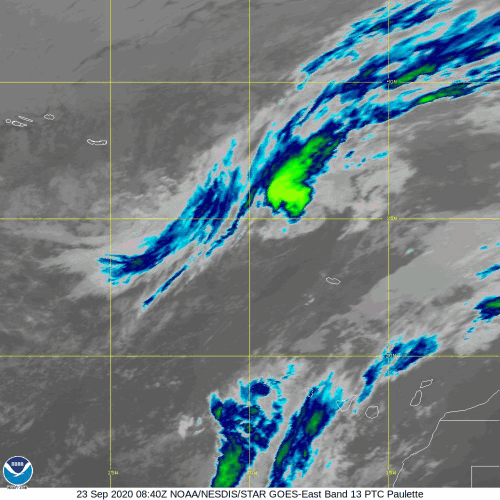
As climate change dumps heat into our oceans and atmosphere, there's more energy around to spark hurricanes. One side effect: Tropical storms that died are being resurrected more often. Case in point: In mid-September, Tropical Storm Paulette formed as a Category 1 before strengthening, then petering out over the Atlantic Ocean five and a half days later. But Paulette was not quite dead. Paulette opened her eye on Sept. 21, and regained strength to form into a tropical storm. Such zombie storms used to be rare because hurricanes lost steam as they rolled north into cooler waters, but thanks to climate change, extreme ocean heating is giving them a second boost, Donald Wuebbles, a professor of atmospheric sciences at the University of Illinois at Urbana-Champaign, told Live Science. Extreme heating in the shallow waters of the Gulf of Mexico, where many storms strengthen before slamming into the U.S., could be particularly vulnerable to climate change, Wuebbles said.
Read more: Zombie storms are rising from the dead thanks to climate change
Arctic transformation may be permanent

Melting sea ice, burning permafrost, retreating glaciers, blistering summer heat and vanishing snow cover — nowhere on Earth has changed as dramatically due to climate change as the Arctic. And that change could be permanent, a disturbing 2020 report suggests.
The Arctic report card, a yearly summary of the Frozen North's environmental status conducted in part by the National Oceanic and Atmospheric Administration, shows climate change accelerating much more rapidly than was expected. At this pace, and without drastic action "there's no reason to think that in 30 years anything will be as it is today," Rick Thoman, an Alaska climate specialist with the International Arctic Research Center (IARC) at the University of Alaska Fairbanks (UAF), said at the time.
What does that mean? Huge swaths of ice-free seas and zombie wildfires as permanent fixtures on land, the experts said.
Read more: Dramatic transformation of the Arctic landscape could be permanent
Sign up for the Live Science daily newsletter now
Get the world’s most fascinating discoveries delivered straight to your inbox.
Godzilla can thank climate change, too

But what happens in the Arctic doesn't stay in the Arctic. This year, a Godzilla dust storm formed in the Sahara, and warming conditions in the Arctic may have fueled its formation, a December study in the journal Geophysical Research Letters found.
During the month of June, a global express train of wind trapped a high-pressure system above northwest Africa, whipping up winds above the Sahara for days. In the end, this Godzilla dust storm broke records for the biggest one ever, creating a 5,000-mile-long (8,000 kilometers) blob that darkened the skies from the Atlantic to the southeastern United States.
But why blame climate change? The whirling winds in the Sahara may have formed because sea-ice extent was extra low at that time. This may have created a vast "anomaly" that allowed Arctic winds to creep lower on the globe than they normally do, supercharging the high-pressure system and northeasterly winds that birthed the monster dust storm.
Read more: Sahara's 'Godzilla' dust storm have been triggered by warming in the Arctic
A deadly hurricane season
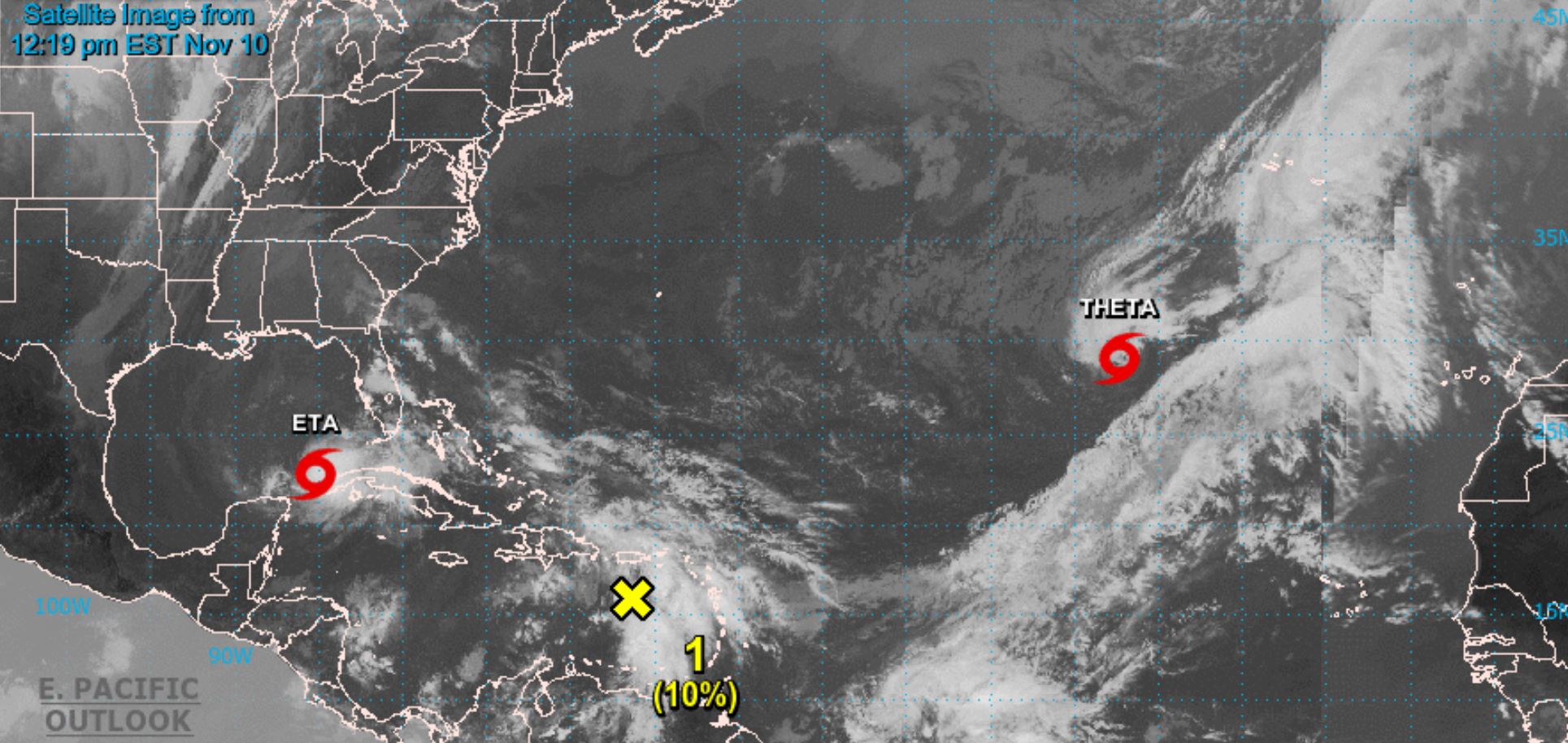
Warming oceans mean more fuel for hurricanes, and 2020 brought proof of that in spades.
The Atlantic hurricane season shattered records with 30 named storms, many of which were strong and deadly. The next busiest season, in 2005, brought 29 named storms. The 2020 season started early with Tropical Storm Arthur on May 16, and we barreled through all the named storms on the list by Sept. 14. The season ended with a bang, as Hurricane Iota strengthened into a 'catastrophic' Category 5 storm — the strongest of the season — with maximum sustained winds of 160 mph (260 km/h). The season had several other damaging and deadly storms, including Hurricanes Laura and Marco, which devastated the Gulf Coast region.
Climate change may not fuel any particular storm, and it may not even make storms more common. But accumulating evidence suggests that warming oceans will make storms stronger and more deadly on average.
Read more: 2020 Atlantic hurricane season shatters records
Greenland may need new maps

Global warming is dramatically reshaping Greenland — literally. The coastline is changing thanks to unprecedented ice loss and sea-level rise. Warming, and the resulting ice loss, have changed where glaciers dump their water into the ocean, which could reshape ecosystems around the island, an October study found.
Greenland is losing 500 gigatons of ice every year, way more than can be made up by snowfall. And melting ice has created a giant slip n' slide for the island's massive ice sheet as it moves above the bedrock, meaning even faster melt.
If this process doesn't slow down, the coastline could look very different in the years to come, the study found.
Read more: Greenland ice melt is reshaping its coastline
The west was ablaze

When things dry out and heat up, fire follows, and this year, the American West learned that the (very) hard way. Thanks to massive lightning storms and forests full of dry kindling, thanks to years of drought, catastrophic fires swept through Oregon, Washington and California over and over, racing through iconic redwood forests and creating several of the biggest wildfires on record.
The biggest fire in California by far was the August Complex Fire that was sparked on Sept. 16 - 17 by massive lightning strikes, and it has since devoured more than 1 million acres (417,000 hectares) — and it is still burning. All but one of the top five fires in the state occured this year.
Explosive wildfires also erupted in Colorado, with all the state's top recorded fires happening in 2020.
Read more: Explosive growth of Colorado wildfire seen from space
Apocalyptic skies from coast to coast
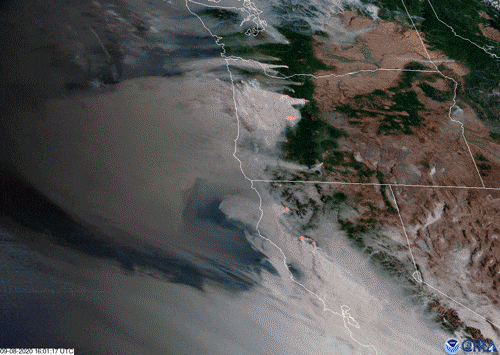
Where there's fire, there's smoke, lots and lots of it. Nothing says "apocalypse now," like walking outside at Noon and seeing the skies as dark as night. In September, the skies across the Bay Area turned an eerie orange, thanks to a thick, choking blanket of smoke heading south from Oregon wildfires.
These conflagrations were visible from space, with the fast-moving California Creek Fire forming a vast fire cloud and at one point, the record-breaking hurricane season collided with the record-breaking wildfire season, creating a truly disturbing image of the twin catastrophes seen from space.
Read more: Stark new imagery shows the scary extent of West Coast fires from space
Earth breaks records left and right

Our warming planet is now breaking records for warmest, hottest and driest, so fast we can barely keep up. This September, for instance, was the hottest on record.That's 0.05 degrees Celsius (0.09 degrees Fahrenheit) warmer than the previous record holder, September 2018. Some of the hottest hots occurred in Siberia, where zombie fires were blazing, as well as South America, Australia and the Middle East.
Sadly, this isn't the only record-breaker this year; January and May were also the hottest on record. Los Angeles recorded its hottest temperature, a blazing 121 F (49.4 C), while in June, a small town in Siberia, the mercury hit 100.4 F (38 C). And sea ice was at a record low this year as well.
Read more: Earth just had its hottest September on record
Massive Antarctic glacier in danger
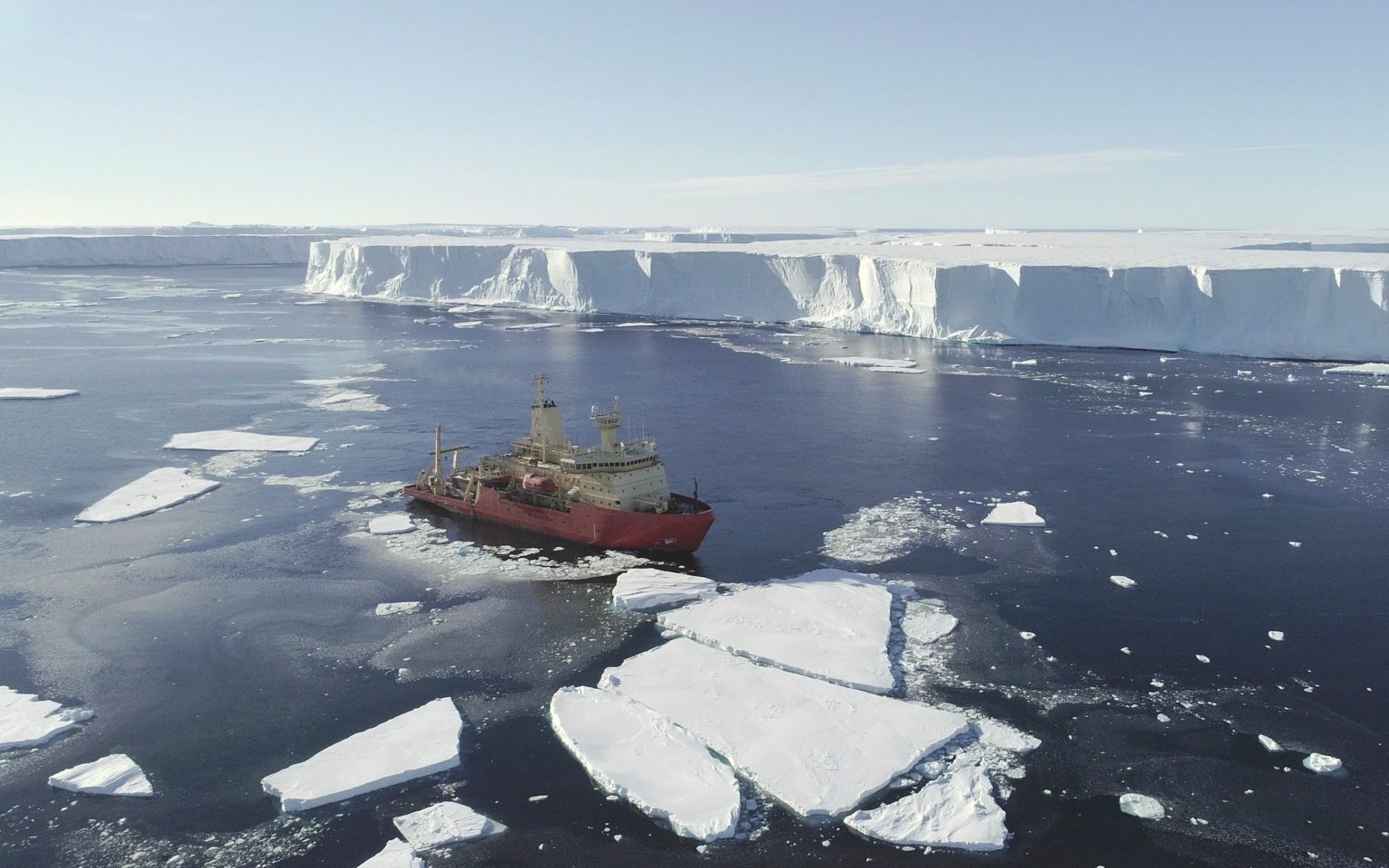
Antarctica was once thought to be relatively insulated from climate change. But that's changing fast. The massive Thwaites glacier, one of the biggest on the coldest continent, is sliding into the sea, thanks to rivers of warm water that are lubricating its base.
Some of these hidden channels beneath the glacier are 800 feet (243 m) deep.
This is bad news, because the glacier is truly gigantic; if the entire hunk of ice were to fall into the ocean, sea levels could rise a whopping 25 inches (63.5 centimeters).
Read more: Rivers of warm water threaten vast Antarctic glacier
Earth is facing a form of heat not seen in 50 million years
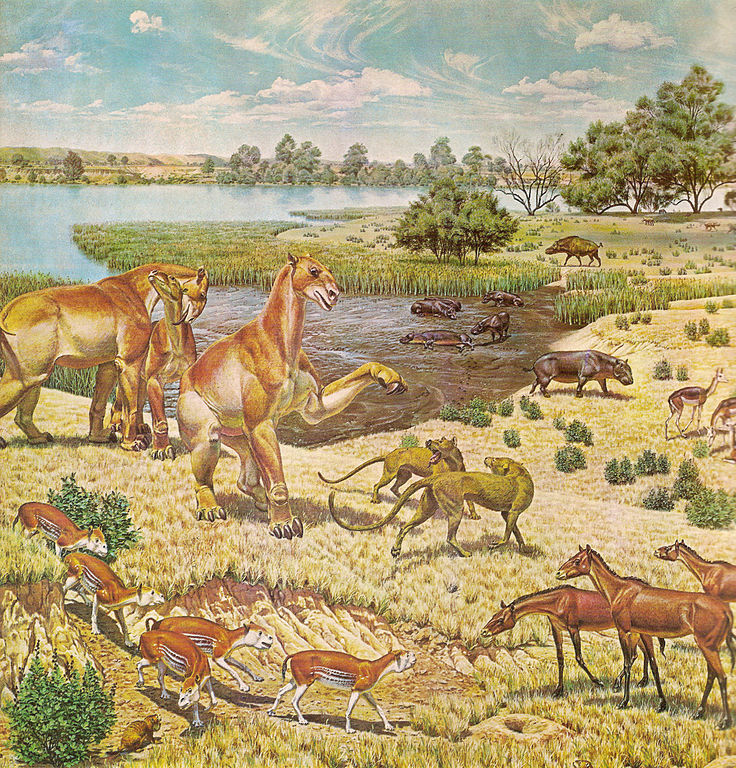
Earth is barreling toward a "hothouse" state that it hasn't seen for eons, a scary study in September found.
By analyzing the chemicals in the shells of tiny sea-dwellers known as forams, which build their shells out of calcium and other elements permeating the ocean, scientists were able to recreate a record of climate on the planet going back to the Cenozoic era, when dinosaurs went extinct. Over that time, Earth moved through Hothouse, Coolhouse, Icehouse and Warmhouse states, thanks to shifts in the planet's tilt, greenhouse gas levels in the atmosphere and the size of polar ice caps.
Those long-dead sea creatures show how anomalous our current warming is, even on geologic time scales. The current warming far outpaces normal fluctuations in the planet's temperature, and could catapult us out of our current Icehouse state into a Hothouse state, the study found.
Read more: Earth is barreling towards a 'Hothouse' state not seen for 50 million years
Lost penguin colony revealed by Antarctic melt

Dozens of Adelie penguin mummies were recently uncovered on a dry, windy cape in southern Antarctica. This site had been used by nesting penguins at least three times over the last 5,000 years, but it was hidden and preserved beneath layers of snow.
While the northern tip of Antarctica was melting fast, Cape Irizar in southern Antarctica, flanked by the icy waters of the Ross Sea, had long been buffered from such extreme changes. But in the last decade, streamlets of meltwater have carried away snow, unveiling the bodies of those black-and-white birds.
As global heating accelerates, nesting sites for millions of penguins in northern Antarctica may disappear, but the newfound site at Cape Irizar may once again be used, Steve Emslie, a professor at the University of North Carolina, Wilmington, told Live Science.
Read more: Dozens of penguin 'mummies' discovered at lost nesting site in Antarctica
It's not too late

Despite the dire warnings our planet is flashing, it's still not too late to hit the brakes on warming.
The U.S. could reach "net-zero" carbon emissions by 2050, a new report found. No single approach will work to stop our climate emissions — every single approach must be pursued to slow warming. Among the steps that could help: Putting 50 million electric cars on the road, increasing electric heating in homes and quadrupling solar and wind energy generation.
And just slowing our greenhouse gas emissions may not be enough: Pulling carbon out of the air, through agricultural practices, forest replanting, carbon capture and even sucking carbon out of the rocks could also help reverse dangerous warming trends, experts told Live Science.
But to get there, we need to take steps immediately.
Originally published on Live Science.

Tia is the managing editor and was previously a senior writer for Live Science. Her work has appeared in Scientific American, Wired.com and other outlets. She holds a master's degree in bioengineering from the University of Washington, a graduate certificate in science writing from UC Santa Cruz and a bachelor's degree in mechanical engineering from the University of Texas at Austin. Tia was part of a team at the Milwaukee Journal Sentinel that published the Empty Cradles series on preterm births, which won multiple awards, including the 2012 Casey Medal for Meritorious Journalism.









